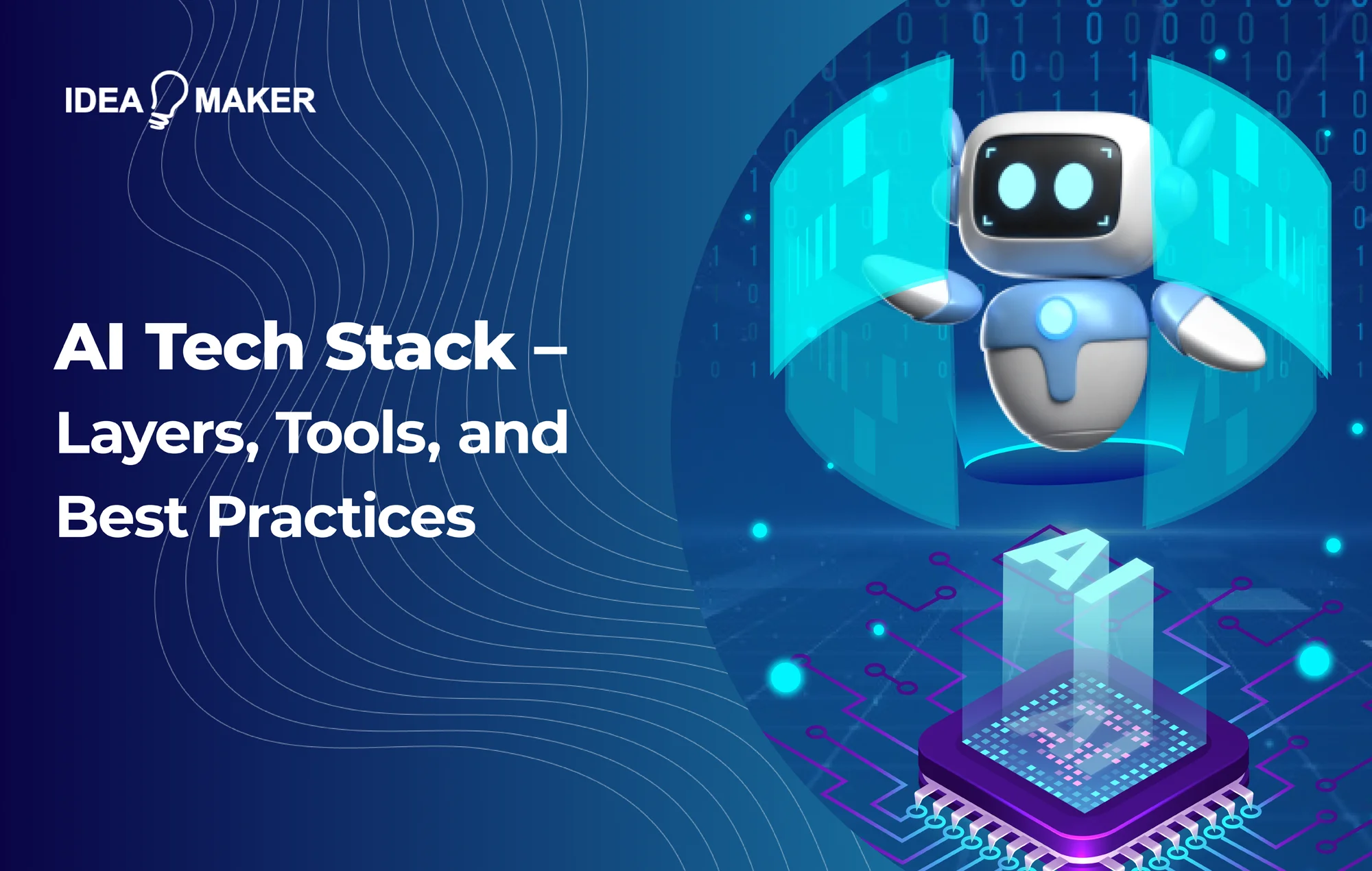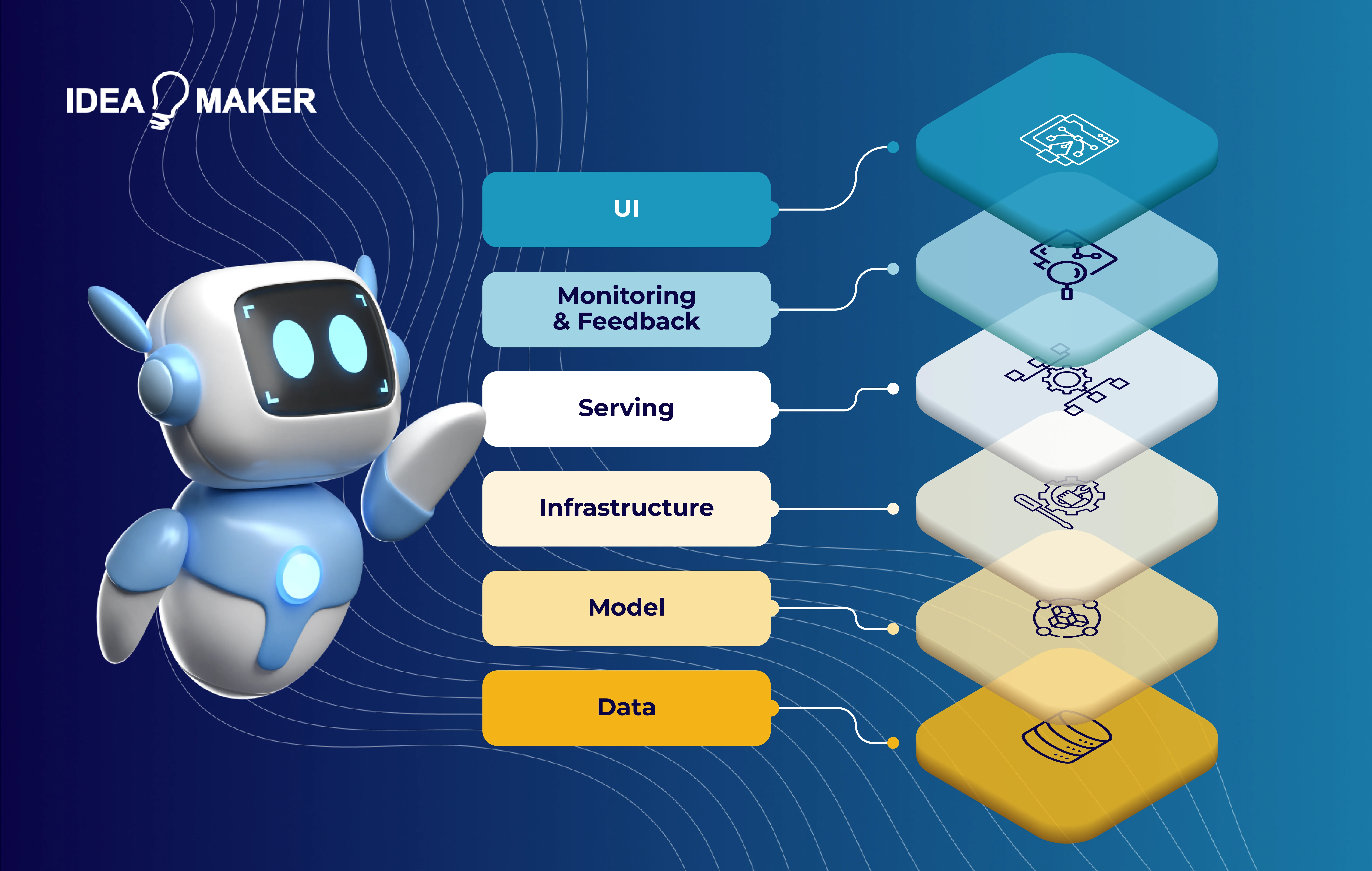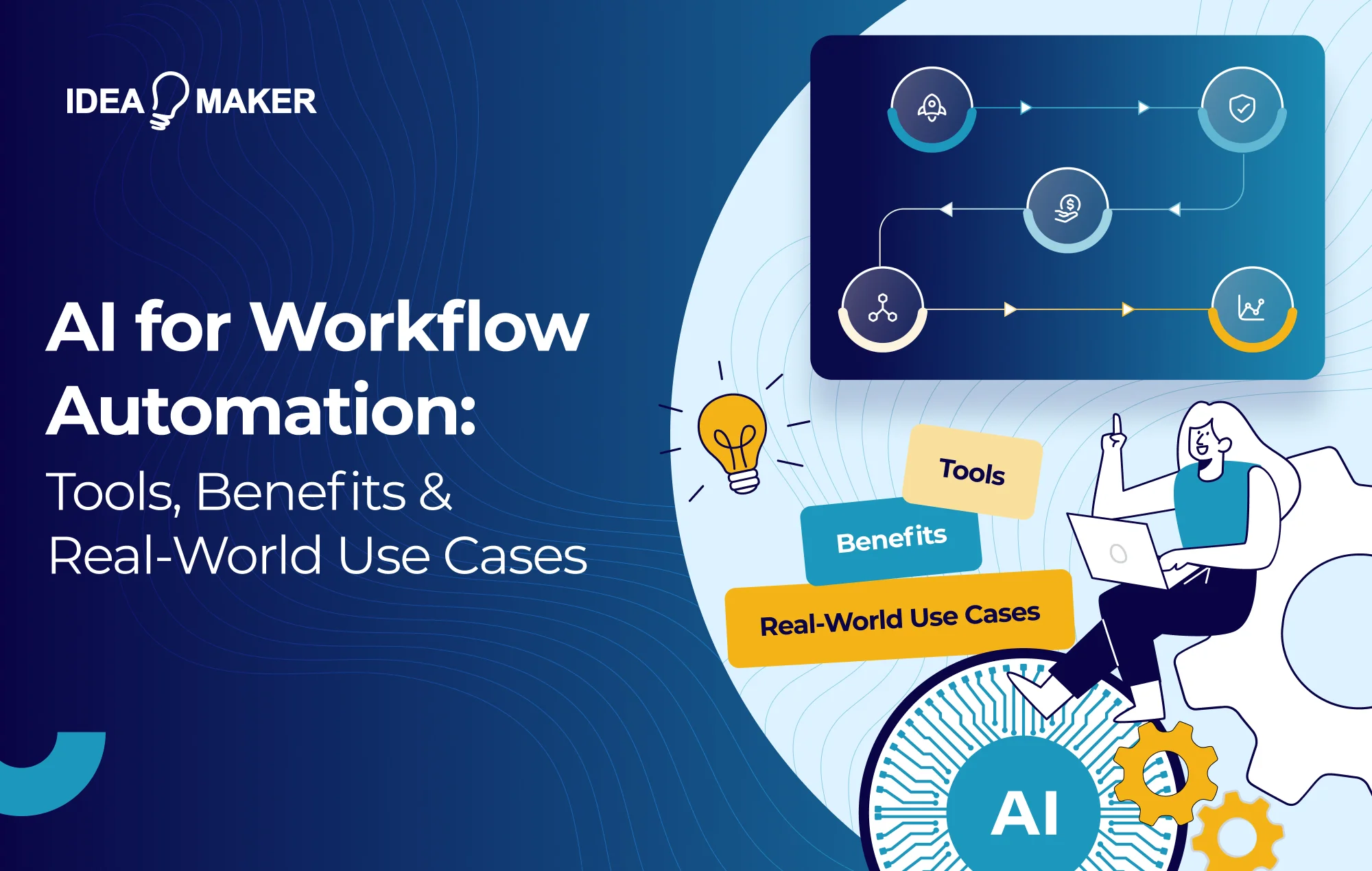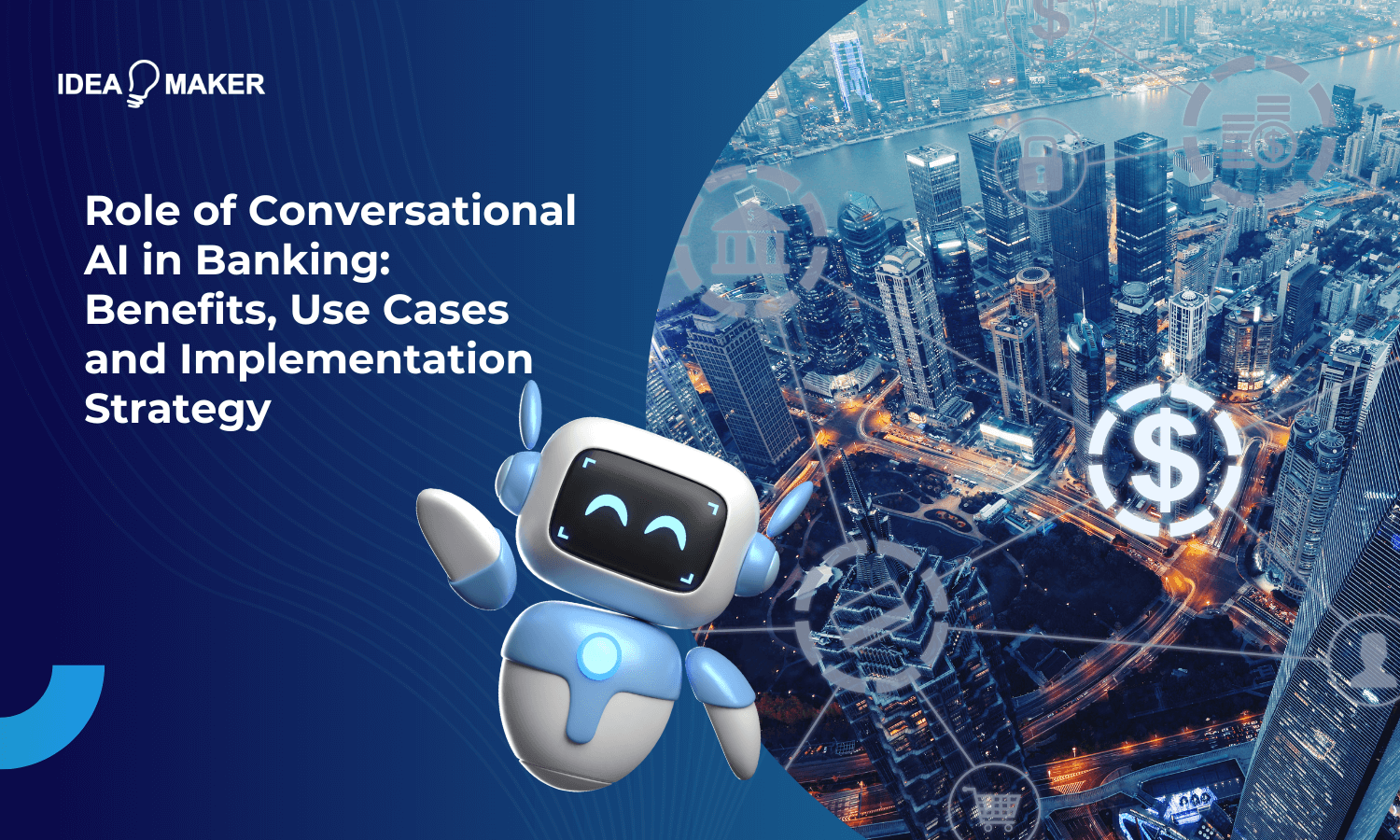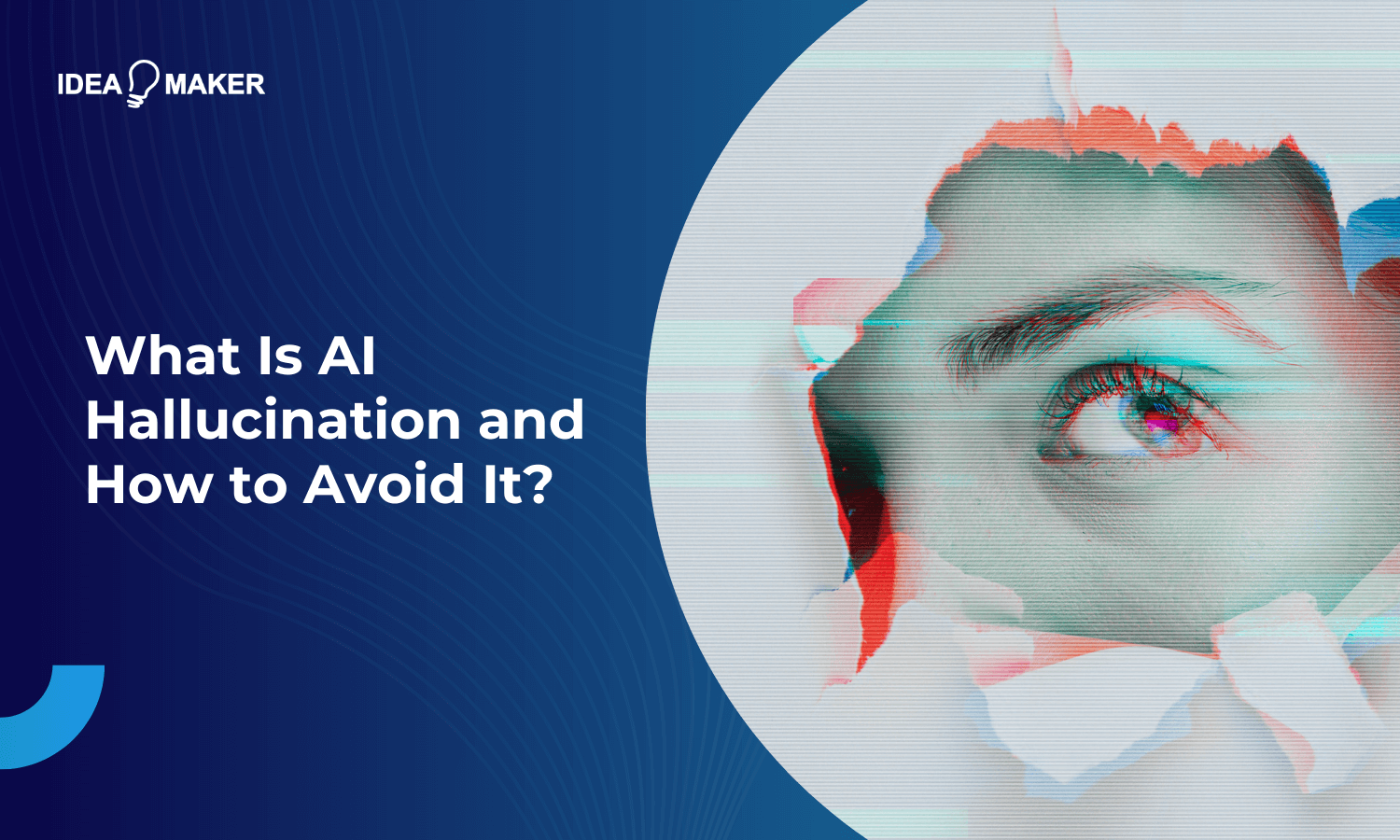Artificial Intelligence is the technology behind our software today, be it personalized recommendations in e-commerce apps, fraud detection in banking systems, or chatbots that answer our questions in customer support environments. Behind these capabilities lies the AI tech stack, a set of tools, frameworks, and infrastructure that make intelligent systems possible. As AI spending globally is expected to exceed $300 billion by 2026, he ability to choose the right stack isn’t just a technical decision, it’s a strategic one that can determine scalability, cost-efficiency, and time-to-market. This guide takes you through each layer of the modern AI tech stack, so you can build AI systems that are not only production-ready but also positioned for long-term success.
Table of Contents
What Are the Layers and Components of the AI Tech Stack?
In AI product development, the AI tech stack refers to the comprehensive set of technologies used to develop and utilize intelligent systems, from raw data manipulation to outputting model scores or predictions in real-world applications. These stacks are composed of layered functionalities that are tied to different processing stages in the AI lifecycle.
A layer is a logical stage of an AI pipeline. For instance, one layer might be responsible for determining how data should be processed, while another should handle training or serving the model. There’s a layer for each category of function, and that layer communicates with the layers below and above it. Such modular AI systems, whether for a gen AI tech stack, an AI infrastructure stack, or a chatbot technology stack, are simpler to design, scale, and maintain.
Inside each layer, there are components. Components are the tools, libraries, frameworks, or services that are used to perform the tasks assigned to that layer. These can range from data ingestion frameworks, such as Kafka, to model training libraries like PyTorch, to deployment tools like Docker and Kubernetes. The right components for each layer of the AI software stack will dictate how smoothly your AI system runs, how well it scales, and how seamlessly it integrates with other parts of your tech infrastructure.
1. Data Layer
The data layer is the foundation of any AI system. It ingests, stores, organizes, and preprocesses raw data before feeding it to a model. There’s no good AI without clean, consistent, and well-organized data. You can have the most advanced AI model, and it will still massively underperform when it lacks clean data. Poor data quality can result in a 20% decrease in productivity and a 30% increase in costs for organizations. That tier allows teams to consolidate data from multiple sources like internal systems, third-party APIs, or even real-time streams. Then combine and prepare it in a format for use in machine learning workflows. It also sets the stage for reproducibility, version control, and compliance, all of which are imperative in a production environment.
The real value of the data layer lies in scalability and efficiency. As datasets grow in size and complexity, the tools in this layer help automate ingestion, apply business logic through ETL/ELT pipelines, and store data in formats optimized for downstream use. From a developer’s perspective, if you already have a good data layer in place, you can eliminate much of the engineering overhead, speed up your iteration cycles, and ensure that your model receives consistent input across experiments and deployment.
Key Components and Tools in the Data Layer:
Data Ingestion:
- Apache Kafka: A distributed streaming platform designed for building real-time data pipelines
- Airbyte: An open-source data integration tool for syncing data from APIs, databases, and more
- Fivetran: Cloud data integration service for ELT in the data stack.
Data Lakes / Warehouses:
- Snowflake: Data Warehouse Designed for the Cloud (high concurrency, scalability)
- BigQuery: Google’s Serverless Data Warehouse for Large-Scale Analytics
- Delta Lake: storage layer for big data workloads on Apache Spark offering ACID transactions.
ETL/ELT Pipelines:
- dbt (Data Build Tool): Gives analysts greater ability to transform data via SQL
- Apache Airflow: Workflow automation and scheduling systems to programmatically author, schedule, and monitor workflows.
2. Model Layer
The model layer is where data becomes intelligence. This layer is responsible for building, training, validating, and iterating on machine learning and deep learning models. Everything from model designing to hyperparameter tuning and performance metrics falls under this layer. Here, business problems are transformed into mathematical models that can learn patterns, forecast future events, and continually improve over time.
What makes this layer so valuable is its contribution to performance and accuracy. This layer supports flexible experimentations, easy reproducibility, and comfortable teammate collaboration. It also ensures the models are versioned, logged, and evaluated consistently to build sustainable AI systems at scale.
Key Components and Tools in the Model Layer:
ML Frameworks:
- TensorFlow: End-to-end open-source platform for machine learning and deep learning
- PyTorch: Established framework (research + production) with dynamic computation graphs
- Scikit-learn: A great library for the classical ML algorithms and for the preprocessing
Feature Engineering Tools:
- Feature tools: An automatically generated set of features using deep feature synthesis
- Pandas: Flexible Python library for data manipulation and feature extraction
Model Management:
- Weights & Biases: Instrument for Logs can be used to track the experiments, monitor the metrics, and store the models.
- MLflow: An open source platform for the complete machine learning lifecycle: Tracking, Projects, and Models
3. Infrastructure Layer
The infrastructure layer is the backbone of any AI system as it provides scalable compute, storage, and orchestration. In this layer of the AI technology stack, AI models are trained on large datasets using multiple GPUs or nodes, and data pipelines and services run reliably at scale. Without a powerful infrastructure layer, AI projects struggle to transition from MVP to actual deployments, hindered by lengthy training times, inconsistent environments, and deployment bottlenecks.
The tools in infrastructure allow for easy expansion or reduction of resources as demand fluctuates. Containerization ensures that environments remain consistent across development and production. At the same time, orchestration frameworks perform tasks such as job scheduling, fault tolerance, and resource optimization.
Key Components and Tools in the Infrastructure Layer:
Compute & GPUs:
- AWS SageMaker: Fully managed service that quickly builds, trains, and deploys ML models at any scale
- GCP Vertex AI: Unified AI platform for training, deploying, and monitoring models on Google Cloud
- Azure ML: Enterprise-grade ML platform with full MLOps using Azure
Containerization:
- Docker: The standard for other containerization, such as packaging your ML environments or apps
- Kubernetes: Open source system for automating deployment, scaling, and management of containerized applications
Distributed Training:
- Ray: A new distributed execution framework in development for scaling Python and machine-learning workloads.
- Horovod: Framework for distributed deep learning across GPUs using TensorFlow, PyTorch, or MXNet
4. Serving Layer
The serving layer brings your AI models to life by providing predictions to end users, applications, or business systems in real-time or in batches. Once a model has been trained and validated, the next step is to deploy it in a manner that is fast, reliable, and scalable. This layer handles all aspects related to hosting the model, exposing it through APIs, and integrating it into various production environments within your AI infrastructure.
The actual value of this layer lies in its ability to operationalize AI through performance tuning, latency reduction, and deployment flexibility. An efficient serving stack allows you to scale predictions with low latency, support multiple model versions, and deploy across different infrastructures, whether that’s cloud servers, edge devices, or IoT hardware.
Key Components and Tools in the Serving Layer:
Model Serving:
- TensorFlow Serving: A high-performance serving system for serving TensorFlow models in production
- Triton Inference Server: NVIDIA’s multi-framework inference server for AI models of all types prevalent in hyperscale data centers
API Gateways:
- FastAPI: Modern, high-speed web framework for building RESTful APIs for ML models
- Flask: Very popular Python microframework, often used for prototyping and model serving
- BentoML: Most flexible ML packaging with all model serving built in and the open source ML platform for packaging & serving ML models as APIs with support for versioning and scaling any model or language.
Edge Deployment:
- NVIDIA Jetson: Next-generation hardware and software for running AI at the edge with GPU support
- ONNX: Open Neural Network Exchange format for cross-framework model deployment
5. Monitoring & Feedback Layer
Deploying an AI model is not the end goal; it’s the beginning of a continuous process of monitoring and enhancing the model’s performance. This layer ensures the model is accurate, reliable, and aligned with business goals after it has been deployed. In production, it also identifies problems such as data drift and concept drift, and offers visibility into system performance. Without proper monitoring, teams risk quietly deploying models that are out-of-date, biased, or underperforming, which ultimately erodes trust and value.
The feedback end of this layer closes the loop on the users, data, and models. It collects immediate feedback, labels, and user interactions that can be leveraged for retraining and fine-tuning models over time. Moreover, 91% of ML models suffer from model drift over time. The feedback loop enables your AI system to self-correct, whether it’s identifying false positives in fraud detection or retraining a recommendation engine based on user behavior.
Key Components and Tools in the Monitoing and Feedback Layer:
Monitoring & Observability:
- EvidentlyAI: A Specialized tool for monitoring ML models in production and detecting data or prediction drift
- Prometheus: An open-source monitoring system and time series database for collecting metrics
- Grafana: A dashboard and alerting tool for ML and infrastructure performance visualisation platform
Feedback Loops:
- Custom Retraining Pipelines: Automated pipelines that bring in new data to retrain models based on new inputs or performance
- Label Studio: Open-source data labeling tool for creating high-quality training datasets from real-world feedback
Logging & Tracing:
- OpenTelemetry: Framework for generating, collecting, and exporting telemetry data like traces, metrics, and logs
- Sentry: Error tracking tool that helps detect, diagnose, and fix issues in production ML and application environments
6. User Interface (UI) Integration Layer
The UI Integration layer is where AI becomes visible, interactive, and actionable. It acts like a bridge between your models and the dashboards, websites, or chatbots. This layer presents insights in the form of recommendations or forecasts in an intuitive manner.
This layer is also responsible for real-time interaction as AI models must learn from user interaction and improve over time. For example, when the user browses items in an e-commerce app, the user’s behavior, such as clicks and dismissals from the UI during browsing, is monitored, and the information is used to make future suggestions.
Key Components and Tools in the UI Integration Layer:
Frontend Frameworks:
- React: The most popular JavaScript library for building component-based, dynamic UIs
- Vue.js: Light-weight, highly potential framework for organized and scalable interfaces.
- Next.js: React Framework to make a fast rendering on the server side
Visualization Libraries:
- D3.js is a powerful library for creating interactive, data-driven visualizations.
- Chart.js: A Library for quick and responsive data and charts display.
- Plotly: Interactive, publication-quality graphs, often used in data science and scientific computing applications.
Conversational Interfaces:
- Streamlit: Python app framework for ML and data science pros to turn data scripts into shareable web apps, in only a few minutes.
- Gradio: Library to build simple UIs around ML models with minimal code
- Rasa UI: Open source chatbot for managing and interacting with Rasa-based chatbots
Embedding Models in Apps:
- WebAssembly: A library format for running high-performance ML inference in the browser
- ONNX. js: A JavaScript runtime for running ONNX models directly in web browsers.
- TensorFlow. js: Library for training and running ML models in the browser or on Node.js
How to Choose the Right AI Tech Stack? Best Practices
Choosing the right AI tech stack when incorporating AI into your business is a strategic one that affects your system’s throughput, scalability, time-to-market, and long-term maintainability. With hundreds of tools for AI throughout its lifecycle, it’s necessary to form a structured perspective that combines technical requirements and business goals.
Here are some points to help you determine what’s best:
Define Your AI Use Case and Business Objectives
Begin by explicitly stating what problem you are solving, and how AI adds to your business model. Are you developing a real-time fraud detection engine, a recommendation system, or a generative AI writing assistant? Different AI business use cases require varying levels of latency, throughput, and model complexity. A well-defined target will save you from overengineering and will dictate what your tech stack should be based on both the technical scope and the value you want to gain.
Consider Data Availability and Infrastructure
AI is only as good as the data it’s trained on. Assess the volume, variety, and quality of your available data before choosing tools. For instance, if your data is scattered across legacy systems or third-party platforms, prioritize strong data integration tools. Similarly, your infrastructure, whether it’s cloud-native, hybrid, or on-premise, should influence decisions on compute, orchestration, and storage technologies.
Evaluate Team Expertise and Resource Constraints
Even the greatest tool in the world is no use if your team doesn’t know how to use it. Look at the technical skills of your developers, data scientists, and DevOps. For example, if your team is already strong in Python, it may be more productive to use PyTorch or TensorFlow rather than learning new frameworks. Also, take into account budget and time constraints. Some platforms provide managed services that save engineering time, while others require more in-house expertise, but also offer more flexibility.
Prioritize Interoperability and Modularity
Your AI tech stack should be built for change from day one. Tools that are compatible with each other via APIs, open standards, and shared formats will save time and reduce integration headaches. Modularity also makes it easier to upgrade components, try out new tools, or pivot to new use cases without having to rewrite your whole system.
Focus on Scalability and Deployment Readiness
It’s one thing to train a model in a notebook; it’s another to deploy it reliably in production. That’s why your AI software stack should include version control, containerization, model serving, and a CI/CD pipeline. Select tools that provide ease in moving from experimentation to deployment without compromising performance or security. If you plan to scale across regions or devices, prioritize support for distributed training, multi-cloud deployment, and edge inference.
Don’t Ignore Monitoring, Feedback, and Ethics
AI systems do not finish at deployment; they evolve as new data comes in. Your analytics stack should also include tools for monitoring how well your models perform in production, tracking any drift, and providing feedback on the necessary actions to take for improvement.
For a responsible AI, your technology stack must also include tools for bias detection, audit trails, data transparency, and explainability to verify the reasons behind the outcomes. These tools are necessary for regulatory compliance, winning user trust, and guaranteeing that your AI stays fair, reliable, and accountable over time.
Emerging Trends in AI Tech Stack
The AI architecture is evolving; hence, the AI technology stack that empowers it also grows constantly. Keeping ahead of the curve involves adopting new paradigms for efficient and more scalable deployment.
Rise of Foundation Models and Multimodal AI
Companies are now accommodating multiple modalities through AI, such as text, image, and audio, and act as a flexible base for fine-tuning across various use cases to reduce development time and improve performance across domains.
No-Code/Low-Code AI Platforms
Companies like Akkio, DataRobot, and Microsoft Power Platform are making AI development accessible to non-technical teams. These platforms provide faster prototyping, higher innovation, and reduce dependency on scarce ML engineering talent. By 2025, 70% of new enterprise applications are expected to utilize low-code or no-code technologies.
Edge AI and TinyML Adoption
Edge AI offers real-time inference, latency control, and better privacy. It is now possible to deploy your models into edge devices such as drones, smartphones, and IoT sensors, due to lightweight models and tools like TensorFlow Lite and NVIDIA Jetson.
Unified ML/AI Ops Platforms
Companies are integrating tools for the entire AI lifecycle into end-to-end platforms for model training, deployment, monitoring, and retraining. Solutions such as Vertex AI, Azure ML, and Databricks streamline workflows, minimize extra tools, and facilitate collaboration between data teams.
Serverless and Event-Driven Infrastructure
Serverless AI architectures (e.g., AWS Lambda with AI services) minimize operational overhead and provide on-demand scaling. Event-driven workflows allow real-time responses to triggers that are ideal for responsive AI systems in e-commerce, fraud detection, and customer service.
AI Stack for Regulatory Compliance and Responsible AI
With AI regulations tightening globally, organizations are incorporating tools for bias detection, explainability (e.g., SHAP, LIME), and data governance. This shift ensures AI deployments are not only effective but also transparent, ethical, and compliant with laws like the EU AI Act and HIPAA.
Partner with Idea Maker for AI App Development
Creating an AI application starts with more than picking the right tools; it’s about making strategic decisions that future-proof your technology and align it with your business needs. We at Idea Maker focus on developing AI end-to-end solutions that are scalable, reliable, and ready to use authentically in the workflow.
Whether you’re building a chatbot for your customers, an analytics engine for your employees, or an entire platform with AI capabilities, our team guides you through the whole AI tech stack from data infrastructure and model design to deployment, monitoring, and UX integration. We don’t just release working software, we build AI systems that grow and learn and can do something tomorrow that they couldn’t do yesterday.
Ready to make your AI dreams come true? Let’s create intelligent solutions — contact Idea Maker now for a no-cost consultation.
FAQs
What are the steps to optimize your current AI tech Stack?
Begin by auditing your current stack for any potential bottlenecks in data pipelines, model deployment, or performance monitoring. Replace siloed or manual processes with interoperable tools, MLOps best practices for automation, and put feedback loops in place to support continuous improvement and retraining.
What is MLOps in the AI Tech Stack?
MLOps is the concept of automating and managing the lifecycle of ML models and their components from training and deployment to model monitoring. It links the layers of infrastructure, model, and monitoring together to provide reliable, scalable, and reproducible AI systems running on shared infrastructure.
Which tech stack is best for AI?
There is no such thing as a one-size-fits-all stack. The right AI tech stack varies depending on your use case, your team’s skills, your infrastructure, and your scale needs. However, a modern AI stack features PyTorch or TensorFlow (for modeling), Kubernetes (for orchestration), MLflow (for management), and, likely, cloud services such as AWS or GCP.
What are the four types of AI technology?
Generally, there are four categories of AI technology:
- Reactive Machines (no memory, task-specific),
- Limited Memory (uses past data),
- Theory of Mind (emotions understood – still in research),
- Self-aware AI (hypothetical). These aren’t layers in a tech stack but are instead conceptual categories of AI intelligence.
What is the tech stack for AI agents?
The tech stack for AI Agents requires a language model (eg, GPT, Claude), a memory (eg, vector databases), a reasoning engine (eg, LangChain), APIs or tools for actions, and a UI for interaction.
What are the three layers of the AI stack?
The AI tech stack contains six layers as discussed in the article:
- Data Layer
- Model Layer
- Infrastructure Layer
- Serving Layer
- Monitoring & Feedback Layer
- User Interface (UI) Integration Layer
Conclusion
Choosing the right AI tech stack isn’t just a technical decision; it’s a strategic move that shapes your ability to innovate, scale, and compete in an AI-driven market. The right architecture keeps data flowing, models improving, and users engaged with experiences that feel effortless and valuable.
As AI adoption accelerates, the gap will widen between companies that build future-ready stacks and those that patch together short-term fixes. Now is the moment to invest in the tools, practices, and partnerships that position your business to lead. At Idea Maker, we help you design and implement AI systems that are robust, scalable, and tailored to your goals so you can deliver results today and stay ahead tomorrow.
